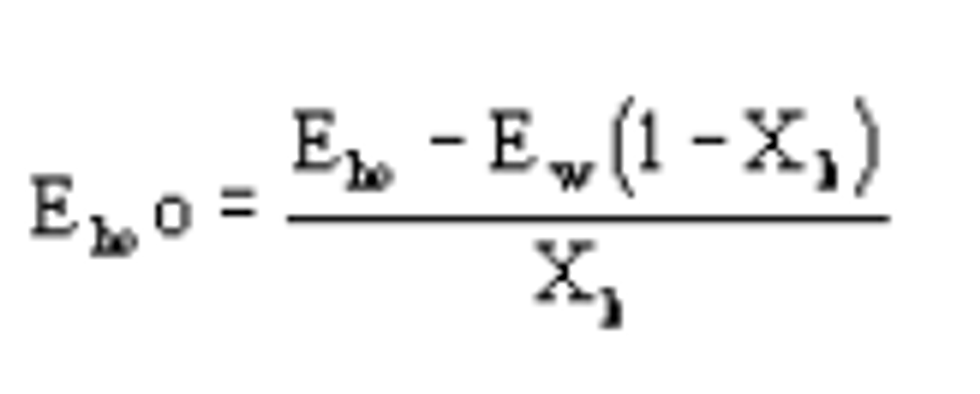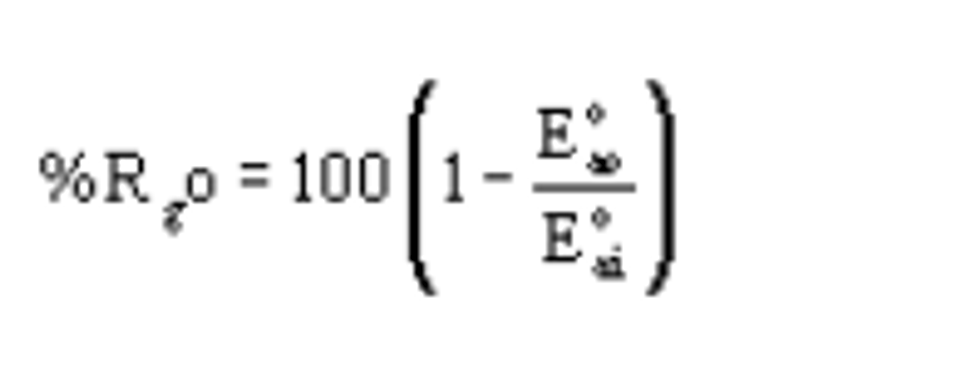['Air Programs']
['Air Quality']
11/20/2023
...
(a) Except as provided in paragraphs (g) and (h) of this section and �60.8(b), performance tests required under �60.8 shall be conducted following the procedures specified in paragraphs (b), (c), (d), (e), and (f) of this section, as applicable. Section 60.8(f) does not apply to this section. The 30-day notice required in �60.8(d) applies only to the initial performance test unless otherwise specified by the Administrator.
(b) The initial performance test required under �60.8 shall be conducted over 30 consecutive operating days of the steam generating unit. Compliance with the percent reduction requirements and SO2 emission limits under �60.42c shall be determined using a 30-day average. The first operating day included in the initial performance test shall be scheduled within 30 days after achieving the maximum production rate at which the affect facility will be operated, but not later than 180 days after the initial startup of the facility. The steam generating unit load during the 30-day period does not have to be the maximum design heat input capacity, but must be representative of future operating conditions.
(c) After the initial performance test required under paragraph (b) of this section and �60.8, compliance with the percent reduction requirements and SO2 emission limits under �60.42c is based on the average percent reduction and the average SO2 emission rates for 30 consecutive steam generating unit operating days. A separate performance test is completed at the end of each steam generating unit operating day, and a new 30-day average percent reduction and SO2 emission rate are calculated to show compliance with the standard.
(d) If only coal, only oil, or a mixture of coal and oil is combusted in an affected facility, the procedures in Method 19 of appendix A of this part are used to determine the hourly SO2 emission rate (Eho) and the 30-day average SO2 emission rate (Eao). The hourly averages used to compute the 30-day averages are obtained from the CEMS. Method 19 of appendix A of this part shall be used to calculate Eao when using daily fuel sampling or Method 6B of appendix A of this part.
(e) If coal, oil, or coal and oil are combusted with other fuels:
(1) An adjusted Eho (Ehoo) is used in Equation 19-19 of Method 19 of appendix A of this part to compute the adjusted Eao (Eaoo). The Ehoo is computed using the following formula:

Where:
Ehoo = Adjusted Eho, ng/J (lb/MMBtu);
Eho = Hourly SO2 emission rate, ng/J (lb/MMBtu);
Ew = SO2 concentration in fuels other than coal and oil combusted in the affected facility, as determined by fuel sampling and analysis procedures in Method 9 of appendix A of this part, ng/J (lb/MMBtu). The value Ew for each fuel lot is used for each hourly average during the time that the lot is being combusted. The owner or operator does not have to measure Ew if the owner or operator elects to assume Ew = 0.
Xk = Fraction of the total heat input from fuel combustion derived from coal and oil, as determined by applicable procedures in Method 19 of appendix A of this part.
(2) The owner or operator of an affected facility that qualifies under the provisions of �60.42c(c) or (d) (where percent reduction is not required) does not have to measure the parameters Ew or Xk if the owner or operator of the affected facility elects to measure emission rates of the coal or oil using the fuel sampling and analysis procedures under Method 19 of appendix A of this part.
(f) Affected facilities subject to the percent reduction requirements under �60.42c(a) or (b) shall determine compliance with the SO2 emission limits under �60.42c pursuant to paragraphs (d) or (e) of this section, and shall determine compliance with the percent reduction requirements using the following procedures:
(1) If only coal is combusted, the percent of potential SO2 emission rate is computed using the following formula:

Where:
%Ps = Potential SO2 emission rate, in percent;
%Rg = SO2 removal efficiency of the control device as determined by Method 19 of appendix A of this part, in percent; and
%Rf = SO2 removal efficiency of fuel pretreatment as determined by Method 19 of appendix A of this part, in percent.
(2) If coal, oil, or coal and oil are combusted with other fuels, the same procedures required in paragraph (f)(1) of this section are used, except as provided for in the following:
(i) To compute the %Ps, an adjusted %Rg (%Rgo) is computed from Eaoo from paragraph (e)(1) of this section and an adjusted average SO2 inlet rate (Eaio) using the following formula:

Where:
%Rgo = Adjusted %Rg, in percent;
Eaoo = Adjusted Eao, ng/J (lb/MMBtu); and
Eaio = Adjusted average SO2 inlet rate, ng/J (lb/MMBtu).
(ii) To compute Eaio, an adjusted hourly SO2 inlet rate (Ehio) is used. The Ehio is computed using the following formula:

Where:
Ehio = Adjusted Ehi, ng/J (lb/MMBtu);
Ehi = Hourly SO2 inlet rate, ng/J (lb/MMBtu);
Ew = SO2 concentration in fuels other than coal and oil combusted in the affected facility, as determined by fuel sampling and analysis procedures in Method 19 of appendix A of this part, ng/J (lb/MMBtu). The value Ew for each fuel lot is used for each hourly average during the time that the lot is being combusted. The owner or operator does not have to measure Ew if the owner or operator elects to assume Ew = 0; and
Xk = Fraction of the total heat input from fuel combustion derived from coal and oil, as determined by applicable procedures in Method 19 of appendix A of this part.
(g) For oil-fired affected facilities where the owner or operator seeks to demonstrate compliance with the fuel oil sulfur limits under �60.42c based on shipment fuel sampling, the initial performance test shall consist of sampling and analyzing the oil in the initial tank of oil to be fired in the steam generating unit to demonstrate that the oil contains 0.5 weight percent sulfur or less. Thereafter, the owner or operator of the affected facility shall sample the oil in the fuel tank after each new shipment of oil is received, as described under �60.46c(d)(2).
(h) For affected facilities subject to �60.42c(h)(1), (2), or (3) where the owner or operator seeks to demonstrate compliance with the SO2 standards based on fuel supplier certification, the performance test shall consist of the certification from the fuel supplier, as described in �60.48c(f), as applicable.
(i) The owner or operator of an affected facility seeking to demonstrate compliance with the SO2 standards under �60.42c(c)(2) shall demonstrate the maximum design heat input capacity of the steam generating unit by operating the steam generating unit at this capacity for 24 hours. This demonstration shall be made during the initial performance test, and a subsequent demonstration may be requested at any other time. If the demonstrated 24-hour average firing rate for the affected facility is less than the maximum design heat input capacity stated by the manufacturer of the affected facility, the demonstrated 24-hour average firing rate shall be used to determine the annual capacity factor for the affected facility; otherwise, the maximum design heat input capacity provided by the manufacturer shall be used.
(j) The owner or operator of an affected facility shall use all valid SO2 emissions data in calculating %Ps and Eho under paragraphs (d), (e), or (f) of this section, as applicable, whether or not the minimum emissions data requirements under �60.46c(f) are achieved. All valid emissions data, including valid data collected during periods of startup, shutdown, and malfunction, shall be used in calculating %Ps or Eho pursuant to paragraphs (d), (e), or (f) of this section, as applicable.
[72 FR 32759, June 13, 2007, as amended at 74 FR 5091, Jan. 28, 2009]
['Air Programs']
['Air Quality']
UPGRADE TO CONTINUE READING
Load More
J. J. Keller is the trusted source for DOT / Transportation, OSHA / Workplace Safety, Human Resources, Construction Safety and Hazmat / Hazardous Materials regulation compliance products and services. J. J. Keller helps you increase safety awareness, reduce risk, follow best practices, improve safety training, and stay current with changing regulations.
Copyright 2025 J. J. Keller & Associate, Inc. For re-use options please contact copyright@jjkeller.com or call 800-558-5011.
